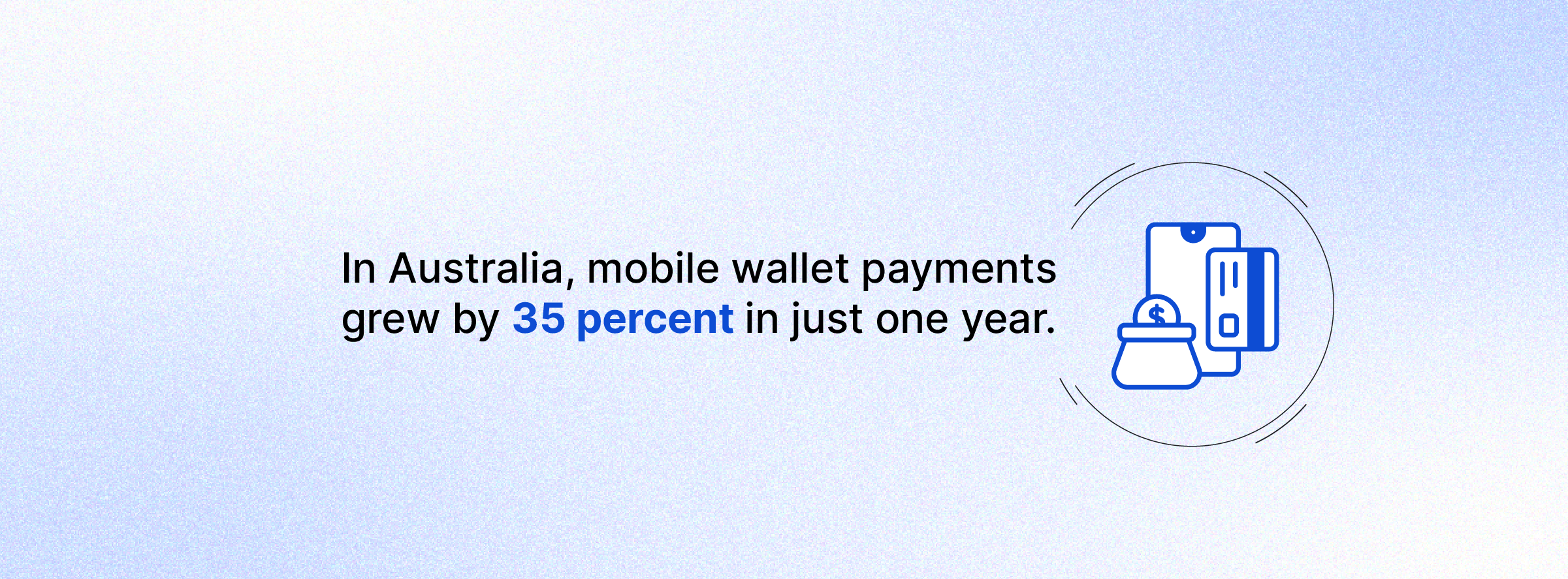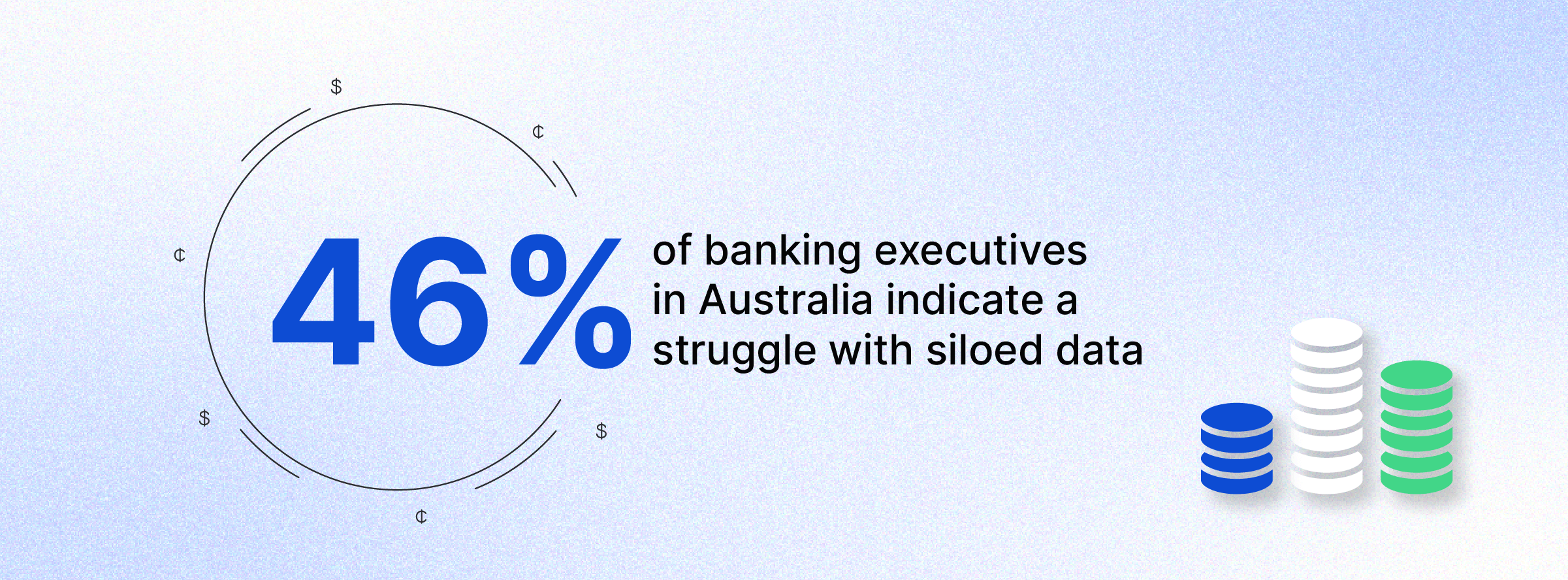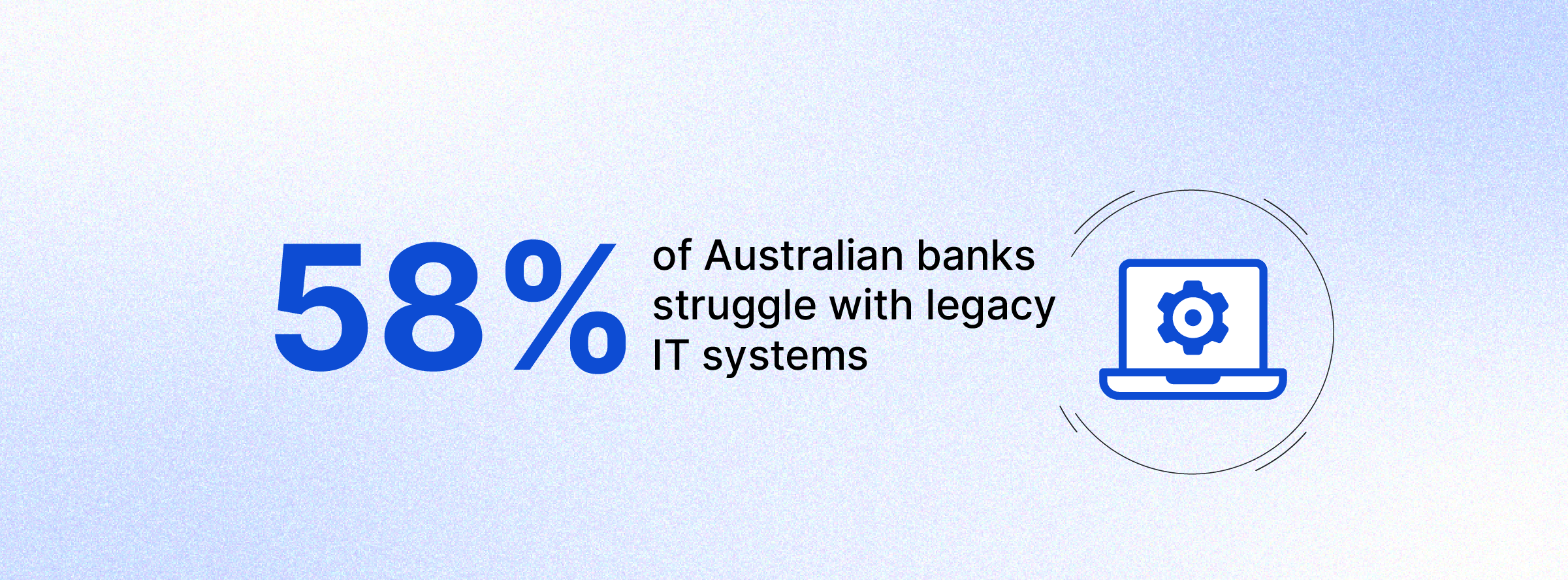AI and open banking spawn more innovation
While the financial services industry has been quick to adopt emerging technologies that get buzz, there’s no time to waste in integrating other advanced tools.
- By Lane Baumeister - Aug 30, 2024 Performance Security Web Analytics martech
When it comes to online banking, Australia is a trailblazer. According to the Australian Banking Association, as of 2022, 98.9 percent of banking transactions in the Land Down Under are made online or via apps, and Australians are among the world’s top users of cashless payments, exceeding users in the United States, the United Kingdom, France, and Germany.
It was just 30 years ago that Wespac, Australia’s oldest bank, first offered online banking with ASB, a major commercial bank in New Zealand, soon following suit. It’s hard to believe banking once required an in-person visit, when today 99 percent of bank interactions happen digitally, according to recent data from the Australian Banking Association (ABA). Not only that, but branch visits have fallen 47 percent since 2019, and mobile wallet payments grew by a staggering 35 percent in just one year to reach a total of nearly $126 billion.

Suffice it to say, online banking is so common that we take it for granted. But there’s always room for greater efficiency and more innovation. Friction-free customer experiences, fortress-like security, and grade-A performance are essential if financial services companies aim to continue leading consumer digitalisation.
Technology and consumer demand are evolving in ways that we never could have predicted, and certainly faster than anyone in 1998 could have imagined. The financial services industry in ANZ can't afford to waste its considerable lead as early adopters.
What’s new? AI, API, and more
The recent pushes toward digitalisation from ANZ governments are setting the tone for innovation across various sectors in both countries. These efforts include the introduction of consumer data rights frameworks, which have paved the way for technological advancement in the financial industry and beyond.
New Zealand ushers in open banking
In May 2024, banks in New Zealand made a major change in online shopping: Consumers no longer have to scramble for a credit or debit card when something catches their eye. Rather, they can make secure, one-off payments directly from their bank account by securely sharing financial data with an authorised third-party API via open banking.
New Zealand established a Consumer Data Right (CDR) framework in July 2021, which allowed consumers and businesses to share their financial data with third parties. Back in 2022, Commerce and Consumer Affairs Minister David Clark emphasised that open banking practices like CDR give consumers “a better deal” by make it easier for consumers to compare mortgage rates, apply for loans, and switch banks, ultimately helping them secure better financial deals.
With open banking payments increasingly the norm, the precedent is set for open banking in personalised financial services, like budgeting tools and investment advice, also by allowing third-party access to banking information.
Commerce and Consumer Affairs Minister Andrew Bayly has indicated that New Zealand may have been slower than other countries to roll out open banking, but the delay allowed the country to learn from others' mistakes and implement a robust system.
Australia’s AI-readiness
A July 2024 nationwide study by INFORM Australia, a leader in AI-powered optimisation software, and YouGov, a global consumer research firm, reveals that Australian banks lead the way in AI adoption, with 83 percent of banking executives confirming AI implementation within their organisations. Fintech experts hope that AI will streamline critical components of the financial services industry, from automating repetitive tasks behind the scenes to offering personalised financial advice for customers or support via chatbots to analysing transaction trends to better spot fraud.
Despite this impressive progress, there are still significant hurdles to overcome: poorly defined AI strategies, fragmented data environments, and employee resistance to change. INFORM Australia’s study indicates that while 85 percent of banking executives see substantial value in AI, 83 percent face employee resistance, 46 percent struggle with siloed data, 29 percent encounter resistance from senior leadership, and 27 percent report unclear strategies.
The study highlights that while 85 percent of banking executives see substantial value in AI, 27 percent report unclear strategies, 46 per cent struggle with siloed data, 83 percent face employee resistance, and 29 percent encounter resistance from senior leadership.

On the consumer side, the customer base seems open to AI in banking, with over half of Australians believing that AI will improve banking services — great news for financial services companies that are aggressive about pursuing AI.
However, consumers’ enthusiasm for AI (and the personalised service it offers) is tempered by lack of trust. According to Publicis Sapient's 2024 Customer Banking Report, nearly all Australians (96 percent) have reservations about banks using AI: 58 percent prefer to speak to an actual bank employee, while 54 percent are concerned that AI will lead to job losses, and 49 percent worry about data security and privacy.
Head of financial services at Publicis Sapient Tales Sian Lopes notes that “Customers want to retain the convenience and security of the status quo, but also expect seamless and personalised experiences — and may not understand the trade-offs required to deliver those two priorities. Banks have the difficult job of balancing those expectations.”
Is there hope for closing the enthusiasm gap between consumers and industry professionals? Definitely. Trust in AI is slightly higher than it was in 2020, and trust is highest among millennials and Gen Z, so the shift is likely inevitable, if slow. This optimism provides a solid foundation for banks to build on as they navigate the complexities of AI adoption
The present — and future — of banking tech looks bright. So, what’s the hold-up?
New regulations keep rolling in
Regulatory compliance remains a significant concern for financial services companies, particularly with stringent requirements set by the Australian Prudential Regulation Authority (APRA), and global standards like GDPR and the Payment Card Industry Data Security Standard (PCI DSS). The sheer volume of new regulations — some “1,200 pages of new regulations over the past four years,” according to ABA CEO Anna Bligh, is daunting enough. But the complexity and frequency of regulatory updates demand robust cybersecurity measures that can adapt to evolving threats and regulatory landscapes.
Still, the industry has lauded recent government announcement of a “financial sector regulatory initiatives grid.”This configuration is designed to give financial services providers (especially those that are medium-sized and smaller) the clear understanding of regulations they need to effectively engage with and implement proposed reforms.
Legacy systems cause modernisation lags
According to the Global Banking Benchmark Study 2022 by Publicis Sapient, 58 percent of Australian banks report struggling with legacy IT systems. Expensive to maintain and complicated to upgrade, this old tech is expensive to maintain and a bear to upgrade, but it also limits banks' ability to improve customer experiences and add new digital tools. Plus, more digital usage is putting extra strain on these old systems, making modernisation even harder.

These legacy systems cause technical debt, which — like regular debt — can quickly become completely unmanageable. When old systems inevitably break down, hands are suddenly forced to make fast, high-pressure decisions that almost always result in band-aid fixes rather than transformations that make practical and economic sense over the long term.
Cybersecurity concerns are on everyone’s mind
It’s not just the perceived weaknesses of AI security that weigh heavily on the industry. In the Reserve Bank of Australia’s reporting on financial security, cyber scams were highlighted as a major concern, with particular reference to The Australian Cyber Security Centre's 2022 annual report, which found a 13 percent increase in cybercrime reports in a year and a loss of a record $3.1 billion to scams. According to the RBA report, high-profile breaches at Optus, Medibank Private, and Latitude Financial exposed millions of sensitive customer records.
A recent cybersecurity review by the Australian Prudential Regulation Authority (APRA) highlighted gaps in how many financial institutions manage cyber and information security risks. Common issues include the failure to identify critical and sensitive information assets, inadequate testing of control programs, outdated incident response plans, and limited assessment of third-party information security capabilities.
Talent shortages are taking their toll
Attracting and retaining talent is a common issue to the tech industry in Australia and New Zealand. Highly skilled professionals in technology have been in shortage for two consecutive years, according to Jobs and Skills Australia.
In New Zealand, the historic flow of roughly 4,000-5000 new tech workers immigrating over five years was slowed due to COVID-19 and hasn’t yet recovered. In 2023, 90 percent of employers struggled to find talent, especially for highly skilled roles. This shortage impacts just about every industry and makes it harder to innovate quickly.
In light of these ongoing efforts, it's more important than ever for companies to adopt innovative digital tools that can provide immediate impact and support their workforce in real-time. While employers focus on upskilling, training, and improving workplace appeal, these long-term solutions need to be complemented by cutting-edge technology that addresses current challenges. Leveraging advanced digital tools can help bridge the gap and ensure companies remain competitive and responsive as they work toward more sustainable solutions.
How financial services companies can future-proof themselves
The challenges facing the industry aren’t insurmountable, but the finance industry is all about dollars and cents. By prioritising digital strategies that deliver ROI, financial services companies across both nations can ensure their digital modernisation efforts pay off.
It starts with a focus on digital maturity. Achieving digital maturity means being ready to leverage new trends, and continuous improvement in digital capabilities and infrastructure is key. This approach improves service delivery, decision-making, and customer trust, starting with these priorities:
1. Modernise legacy systems
Are equipment or systems you affectionately refer to as “old (semi) reliable” standing in the way of your digital transformation? Legacy tech is expensive to maintain and complicated to upgrade, as we all know, but given how competitive the financial services industry is, upgrading to cloud computing, AI, and advanced data analytics isn’t optional. It not only boosts performance, scalability, and security, but also greatly affects the customer experience.
2. Invest in trust
Regular risk assessments, updating control programs, and improving incident response plans are essential for successful digitalisation. That includes ensuring third-party services meet stringent security standards, which is also vital to protect data and maintain trust.
Investing in these security measures isn’t just about preventing cyber-attacks; it's about creating a secure environment that fosters consumer trust in AI and other advanced technologies. When consumers feel confident that their data is safe, they’re more willing to use AI-powered services, which in turn can drive the success and growth of your investment in these technologies.
If you don’t build trust, you’ll wonder why you wasted so much money on technology customers don’t want to use. Perhaps even worse, since trust is so closely tied to brand perception, your brand will suffer.
3. Foster professional development
It’s no secret that countries around the world regard investment in technology education as critical to addressing talent pool issues and growing their economies. Just as important? Investment in professional development within companies. Financial services companies should adopt a holistic approach to nurture skills within their organisations, starting with:
- Streamlining workflows to reduce time spent on administrative tasks
- Empowering employees with more autonomy and meaningful projects
- Integrating on-the-job training into daily workflows
Offering flexible learning opportunities such as online courses and webinars, fostering a positive work environment, and focusing on career development are also essential strategies. These measures can help create a more dynamic and skilled workforce that’s ready to tackle the challenges of digital transformation.
4. Improve interoperability
Imagine you've got a flood of customer feedback complaining about the loan application process. And you agree: It requires repeated submission of information and documents, and it's cumbersome and introduces far too many opportunities for mistakes on both sides of the relationship. Customers are frustrated, and your team is burdened with inefficiencies that could easily be avoided with a more streamlined system.
Preventing this headache for consumers and employees requires more interoperability, which allows data to be shared across departments — a boon to efficiency. Right now, many financial services companies operate in silos, where departments don't share data effectively. This fragmentation leads to inefficiencies, with duplicate data entries and manual processes slowing everything down. It also harms the customer experience as services become inconsistent and slow.
What's more, financial services companies can save costs on IT maintenance and improve decision-making with better data insights. According to a report by KPMG, optimizing processes and integrating systems can drive cost efficiencies by up to 20-30 percent over three years.
How Siteimprove can help
Siteimprove’s comprehensive platform includes an array of tools that help financial services companies embrace the latest technologies and thereby stay ahead of the curve. Plus, the platform breaks down issues into easy-to-understand, prioritised lists, so it’s simple for any team member to follow the provided guidelines — no specialised knowledge needed.
-
Spend less time on manual error checks & accessibility testing
Are manual UX fixes eating up your team’s time and resources? Our tools can take care of the daily chores to keep people focused on more strategic work. Our automated tools can quickly identify common accessibility problems like low colour contrast, missing alt text, and ineffective button designs.
Our tools also help you maintain brand integrity with custom policies that maintain consistency and will comply with specific terminology requirements across your digital properties.
These policies let you set your own rules for automatic testing, addressing the unique needs of your customers, local regulations, or internal guidelines. By automating these checks, you not only streamline your operations but also enhance the overall customer experience.
-
Enhance your current tools through integration
Internal resistance to a complete overhaul of your systems and tools? Strengthen your current banking tools with seamless integrations. Siteimprove offers CMS plugins for trusted platforms like Adobe Experience Manager and Optimizely as well as browser extensions and connectors for your favourite productivity tools. With the Siteimprove API, you can create custom solutions tailored to your bank's specific needs.
Whether it's a digital experience platform (DXP), content management system (CMS), marketing automation tools, Power BI, or task management software, Siteimprove enhances the functionality of your entire digital ecosystem. This ensures that your banking operations are efficient, integrated, and adaptable to changing demands.
-
Uncover the data that should be driving decisions
Is your most revealing data hidden in dashboards or complex reports? By connecting user analytics directly to content experiences, Siteimprove helps analyse critical visitor behaviour and conversion patterns. This data-driven approach doesn’t hide these insights within settings or reports that require extensive training to understand, and it supports evidence-based decision-making and policy evaluation.
-
Prioritise improvements by impact
Eliminating redundancies and busy work from your workflows allows you to completely reimagine your modernisation tasks, and Siteimprove makes this process easier. Whether you're focused on website performance, accessibility, or improving the content experience, our prioritised suggestions help you see the impact before you start the work.
-
Assess user-value on a deeper level
Are you missing out on valuable insights about your website users just because they didn't convert? With Siteimprove's Visitor Engagement Score, you can uncover the true value of these highly engaged users by analysing their behaviour throughout the customer journey. No longer buried in complex reports, this data allows you to see what actions these users are taking, providing crucial information that can inform your content strategy and customer engagement efforts.
The financial services industry in Australia and New Zealand had an early start with tech adoption and high consumer acceptance. However, maintaining this competitive edge is not as simple as ‘lead the way or get left in the dust.’ Successful, ongoing digital transformation requires strategic planning to address unique challenges: Legacy systems must be modernised, cybersecurity needs to be strengthened, and talent must be nurtured and developed.
To navigate these complexities and continue leading in digital transformation, talk to one of our financial services experts today. They can help you identify the challenges you face and achieve your digital goals efficiently and effectively.
By prioritising impactful work, enhancing data analytics, integrating digital tools, focusing on accessibility, and promoting interoperability, we can help you build more efficient, effective, and trusted digital services.
